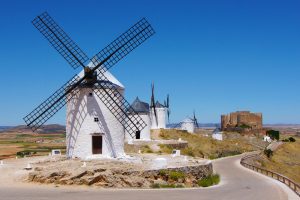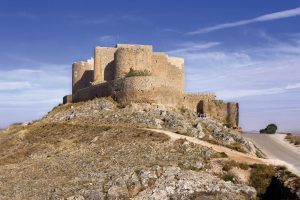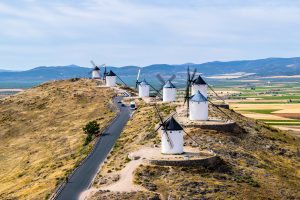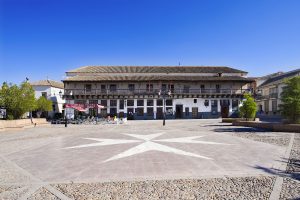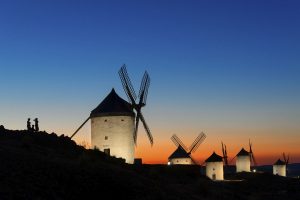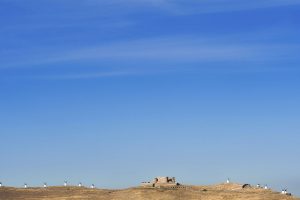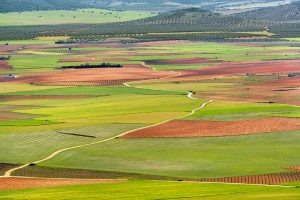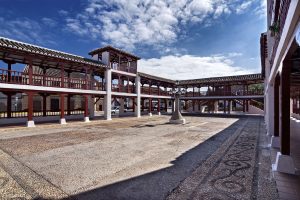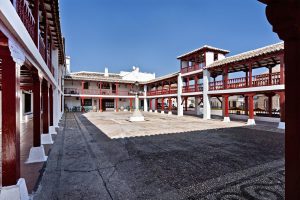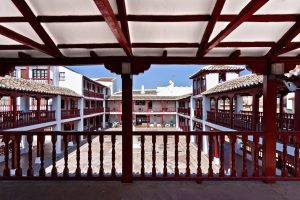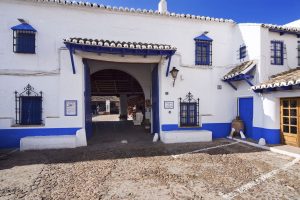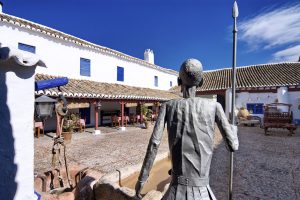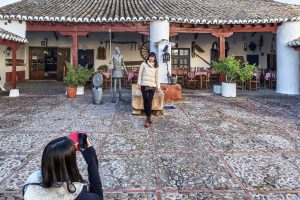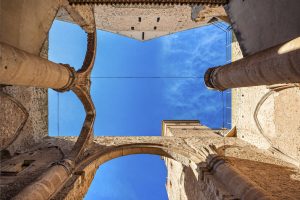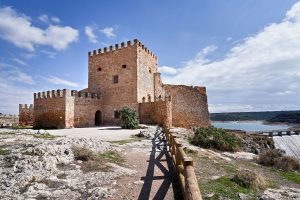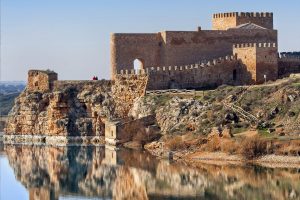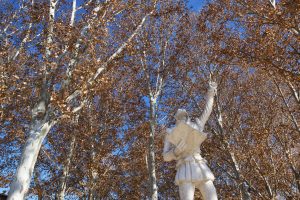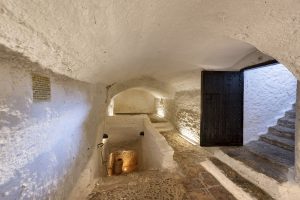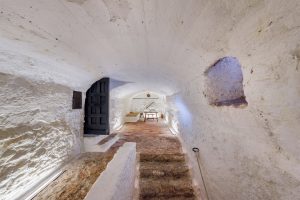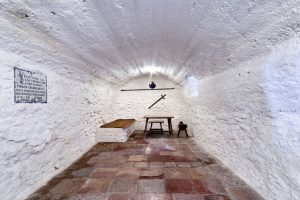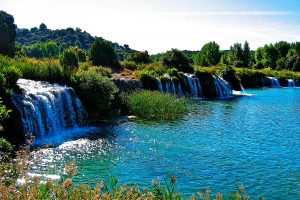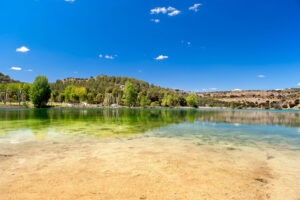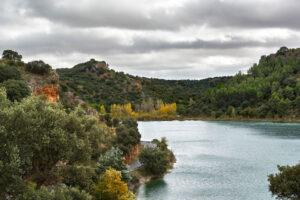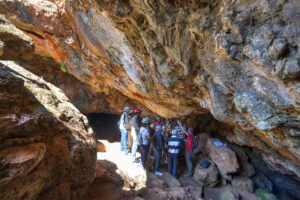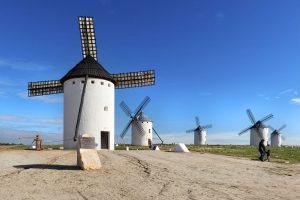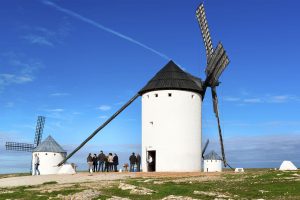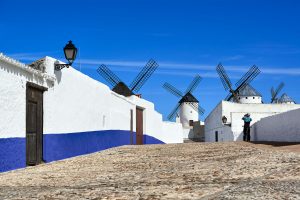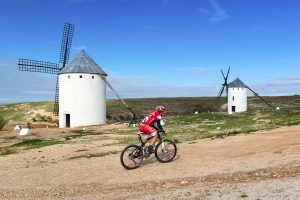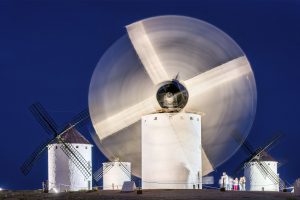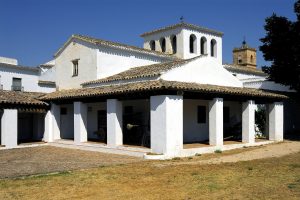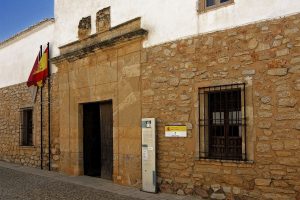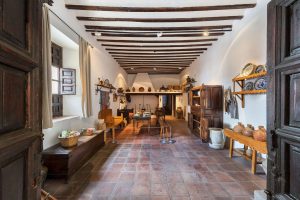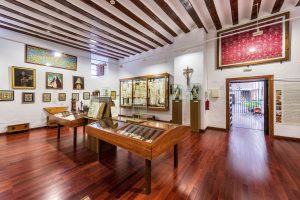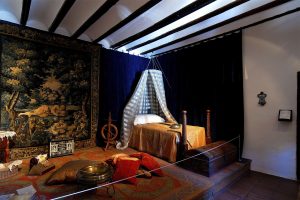THE ROUTE OF DON QUIXOTE AND THE WINDMILLS

The traveler will not only walk the earth, but he will also through the pages of the greatest myth that literature has produced: Don Quixote. In this initiatory journey, fiction will be superimposed on reality until it is canceled; The roads of La Mancha will become novel roads, roads towards uncontrollable regions of the literary world, those high-altitude regions where poets and the knight Don Quixote turn taverns into castles with battlements of stone and moon.
In this territory, the traveler will cross plains of infinite horizons, villages with wide streets, crests with white windmills, the largest vineyard in Europe and will find a surprising nature filled with lagoons and landscapes full of magic.
The essentials on the
Don Quixote´s Route
Location 1
- You can find: Calderico Hill, Castle of La Muela
Location 2
Location 3
Location 4
Ruidera and the Cave of Montesinos
- You can find: Ruidera lagoons, Cave of Montesinos
Location 5
Location 6
Consuegra
It is one of the most important towns in the province of Toledo. It is dominated by the Calderico hill where the windmills and the Castle of La Muela rise. At present 12 of the 13 mills are preserved restored.
Puerto Lápice
A typical town of La Mancha, it is the gateway to the province of Ciudad Real with beautiful streets and large houses, decorated with grills. There are three of the four typical inns known by the name of ventas. One of them is Ventas del Puerto Lápice, which Cervantes immortalized in his work.
Argamasilla de Alba
In the basements of the Medrano’s house, it is believed that Cervantes was incarcerated and started to write Don Quixote. Located on a corner in the center of the town, it has a single floor and a cave on two levels, which can be reached through the patio. It was declared a historical monument in 1972. The cave nowadays keeps its original appearance.
Ruidera and the Cave of Montesinos
Lagunas de Ruidera Natural Park occupies an area of 3,772 hectares that make up one of the most important lake areas in the Iberian Peninsula. It is a succession of 15 small or medium-sized lagoons that run along 30 kilometers of land shared between the provinces of Albacete and Ciudad Real. A few kilometers from the Ruidera lagoons is the Cave of Montesinos. The main value of this cave is the literary one since Miguel de Cervantes focused on it the greatest enchantment of Spanish literature.
Campo de Criptana
Its landscape is dominated by the famous mills that Don Quixote mistook for giants. The main attraction of Criptana are its mills, located in the Sierra de la Paz. At present ten are conserved. Three of them have been declared constructions of cultural interest due to their antiquity, they date from the 16th century and retain their original mechanisms.
El Toboso
Emblematic town of the Cervantes universe. Dulcinea’s house is a typical La Mancha workhouse from the 16th century, very well-restored and decorated. It also has great literary value because it was the residence of a famous and historic neighbor, Mrs. Ana Martínez Zarco de Morales, who is identified with Dulcinea.

